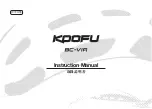
34
ridewithinyourabilities
Drive Train Problems
The drive train for a motorcycle uses
either a chain, belt, or drive shaft to
transfer power from the engine to
the rear wheel. Routine inspection,
adjustment, and maintenance makes
failure a rare occurrence. A chain or belt
that slips or breaks while you’re riding
could lock the rear wheel and cause
your motorcycle to skid.
If the chain or belt breaks, you’ll
notice an instant loss of power to the
rear wheel. Close the throttle and brake
to a stop in a safe area.
On a motorcycle with a drive shaft,
loss of oil in the rear differential can
cause the rear wheel to lock, and you
may not be able to prevent a skid.
Engine Seizure
When the engine “locks” or
“freezes” it is usually low on oil. The
engine’s moving parts can’t move
smoothly against each other, and the
engine overheats. The first sign may be
a loss of engine power or a change in
the engine’s sound. Squeeze the clutch
lever to disengage the engine from the
rear wheel. Pull off the road and stop.
Check the oil. If needed, oil should be
added as soon as possible or the engine
will seize. When this happens, the effect
is the same as a locked rear wheel. Let
the engine cool before restarting.
aNiMaLS
Naturally, you should do everything
you safely can to avoid hitting an
animal. If you are in traffic, however,
remain in your lane. Hitting something
small is less dangerous to you than
hitting something big — like a car.
Motorcycles seem to attract dogs. If
you are being chased, downshift and
approach the animal slowly. As you
approach it, accelerate and leave the
animal behind. Don’t kick at the animal.
Keep control of your motorcycle and
look to where you want to go.
For larger animals (deer, elk, cattle)
brake and prepare to stop — they are
unpredictable.
FLYiNg OBJeCtS
From time to time riders are struck
by insects, cigarettes thrown from cars
or pebbles kicked up by the tires of
the vehicle ahead. If you are wearing
face protection, it might get smeared
or cracked, making it difficult to see.
Without face protection, an object
could hit you in the eye, face or mouth.
Whatever happens, keep your eyes
on the road and your hands on the
handlebars. When safe, pull off the road
and repair the damage.
gettiNg OFF the rOaD
If you need to leave the road to check
the motorcycle (or just to rest), be sure to:
• Check the roadside
— Make sure
the surface of the roadside is firm
enough to ride on. If it is soft grass,
loose sand or if you’re just not sure
about it, slow way down before you
turn onto it.
• Signal
— Drivers behind might not
expect you to slow down. Give a
clear signal that you will be slowing
down and changing direction.
Check your mirror and make a head
check before you take any action.
If your motorcycle starts to wobble:
A. Accelerate out of the wobble.
B. Use the brakes gradually.
C. Grip the handlebars firmly and close
the throttle gradually.
D. Downshift.
testyourself
10
Answer - page 47
Summary of Contents for 16th Edition
Page 54: ...54 ...
Page 58: ......
Page 60: ...Motorcycle Safety Foundation 2 Jenner Suite 150 Irvine CA 92618 3806 www msf usa org ...
















































